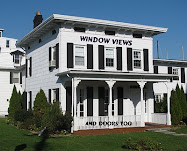 The Duomo of Orvieto took some 300 years to build (begun in 1290) and is one of Italy's greatest cathedrals. The Gothic façade of the Orvieto Cathedral is one of the great masterpieces of the Late Middle Ages. The three-gable design is attributed to Maitani, who had clearly undergone some influence by the design scheme for the façade in Tuscan Gothic style of the Siena Cathedral by Giovanni Pisano (1287-1297) and the plan for façade of the Florence Cathedral by Arnolfo di Cambio (1294-1302).
The Duomo of Orvieto took some 300 years to build (begun in 1290) and is one of Italy's greatest cathedrals. The Gothic façade of the Orvieto Cathedral is one of the great masterpieces of the Late Middle Ages. The three-gable design is attributed to Maitani, who had clearly undergone some influence by the design scheme for the façade in Tuscan Gothic style of the Siena Cathedral by Giovanni Pisano (1287-1297) and the plan for façade of the Florence Cathedral by Arnolfo di Cambio (1294-1302).
The building was constructed under the orders of Pope Urban IV to commemorate and provide a suitable home for the Corporal of Bolsena, a miracle which is said to have occurred in 1263 in the nearby town of Bolsena, when a traveling priest who had doubts about the truth of transubstantiation found that his Host was bleeding so much that it stained the altar cloth. The cloth is now stored in the Chapel of the Corporal inside the cathedral.
Please click on the photographs to see more detail.
 The most exciting and eye-catching part is its golden frontage, which is decorated by large bas-reliefs and statues with the symbols (Angel, Ox, Lion, Eagle) of the Evangelists created by Maitani and collaborators (between 1325 and 1330) standing on the cornice above the sculptured panels on the piers.
The most exciting and eye-catching part is its golden frontage, which is decorated by large bas-reliefs and statues with the symbols (Angel, Ox, Lion, Eagle) of the Evangelists created by Maitani and collaborators (between 1325 and 1330) standing on the cornice above the sculptured panels on the piers.  The Lion
The Lion The Eagle
The Eagle
I hope you enjoyed this installment from my recent trip to Italy. The day I visited Orvieto the sky was brilliant and oh so blue and the cathedral, as I have reported about in a previous post, sparkled like a jewel atop the hill.

 The Basilica di Santa Chiara (Saint Clare) pictured is dedicated to and contains the remians of Chiara Offreduccio(
The Basilica di Santa Chiara (Saint Clare) pictured is dedicated to and contains the remians of Chiara Offreduccio(


































.jpg)








